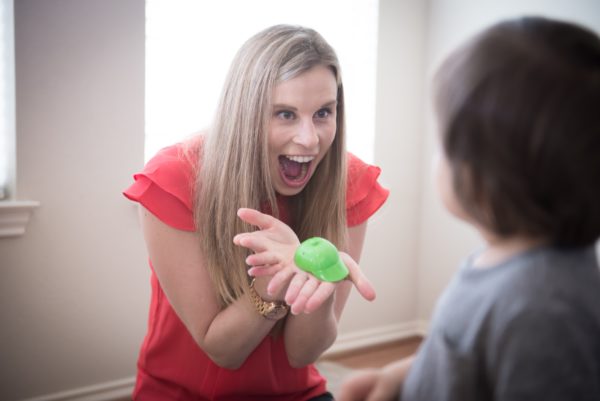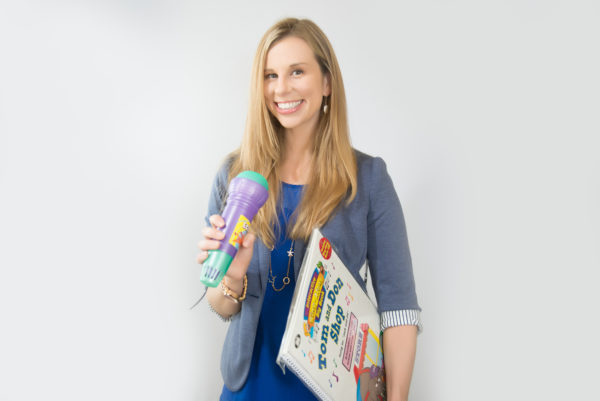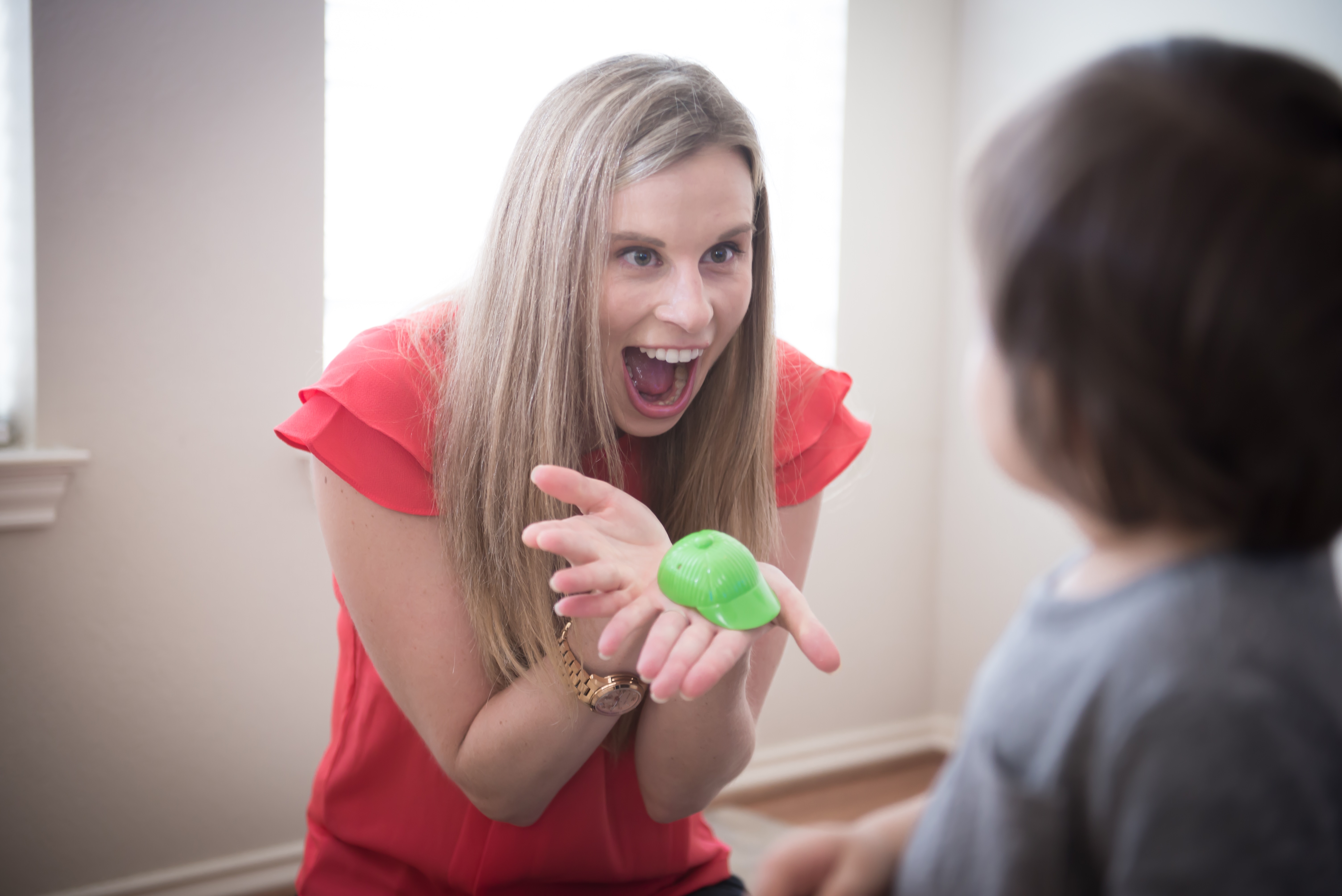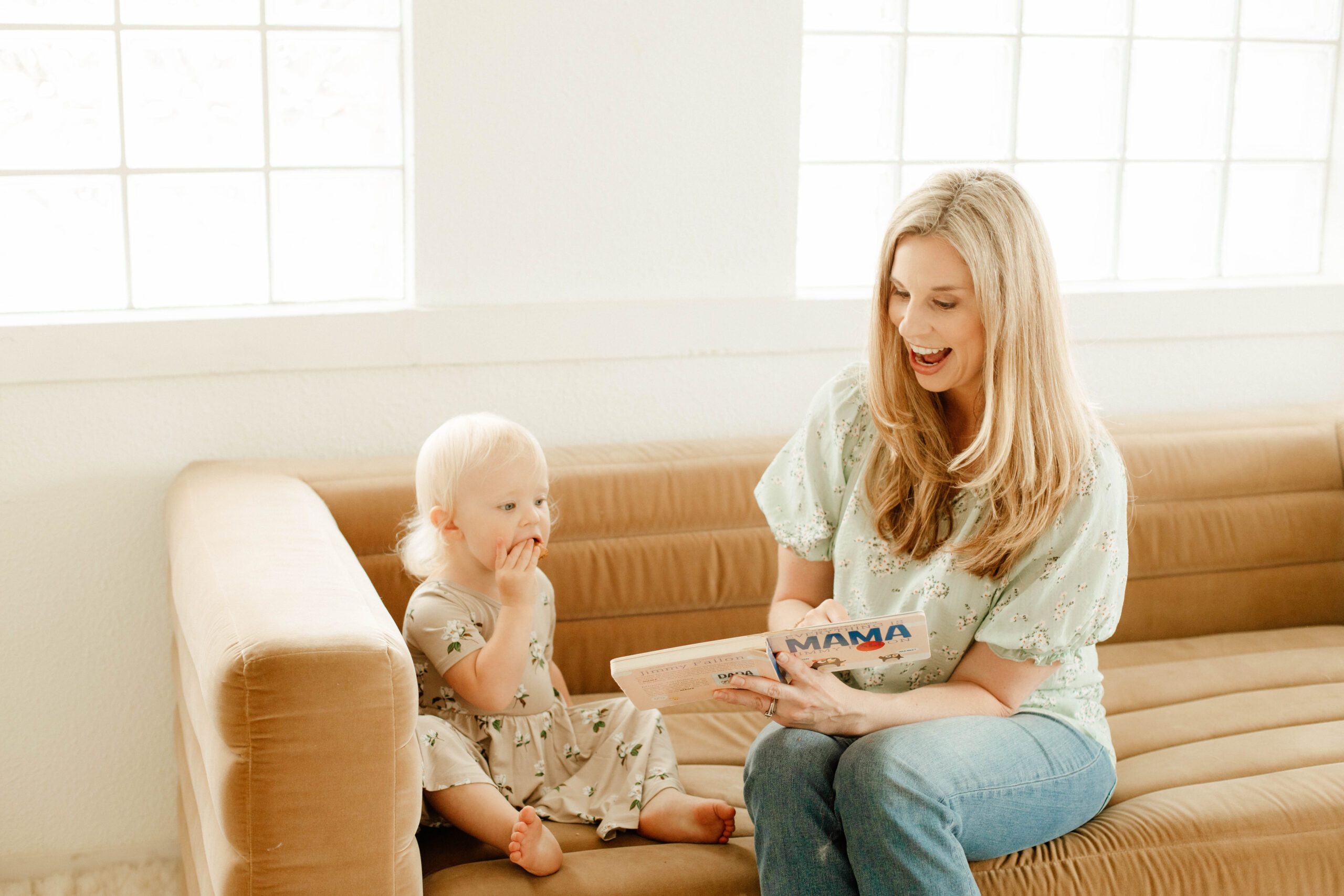
If you ever have a chance to observe preschoolers playing “house,” you will notice that even young children change their voice when talking to the “baby.” This “sing songy” speech actually has a technical name called “motherese” or “infant-directed speech.” This way of talking occurs all around the world and actually helps children learn language.
When talking to a baby, we subconsciously lengthen our vowels (“Hiiiiiiiiii”) and produce more pitch swings. We use shorter sentences and place longer pauses between utterances. We tend to put a novel or important word at the end of the utterance (“See the cow? Look at the cow!”) How do these changes in speech help children understand language? Let’s find out!
Babies actually prefer listening to this style of speech. It tells the child “this language is for you” and therefore captures their attention to tune into the language around them. Research shows that infant-directed speech is very powerful in terms of word learning. Babies between 18 and 24 months learn new words better when they are delivered in this style. In one study, babies learned new words only when they were spoken in infant-directed speech. It wasn’t until children were 34 months of age that they could learn new words regardless of whether they were spoken in infant-directed speech or adult-directed speech.
“Baby talk” helps babies discriminate between sounds and words. Research shows that babies around five months of age can tell the difference between the made-up words “malana” and “marana” only when produced in a sing song pattern. Since baby talk exaggerates sounds, babies seem to hear the differences more easily. “Baby talk” also helps babies figure out the vowels in their language. Babies are natural born pattern seekers and are constantly working to find patterns within the string of sounds around them. “Baby talk” eases this burden for the child by helping them segment the speech around them.
Putting a novel word at the end of a sentence stresses its importance. One study found that when teaching new words to their toddlers, American and Turkish mothers both put new words at the end of the phrase. In the Turkish language, it is not grammatically correct to put a noun at the end of a sentence. Researchers believe the Turkish mothers do this to help make the word stand out. Additionally, we tend to repeat a word several times when using this style of speech. This further aids the child in hearing and learning new words.
Whether you call it “motherese,” “infant directed” or “child directed speech,” or just plain old “baby talk,” one thing is for sure. Baby talk helps children learn the language around them!

Brooke is the owner of The Speech Dynamic, where she provides play based and family centered speech and feeding therapy. She is the co-creator of “Wiggle time,” an interdisciplinary curriculum for pediatric therapy. She has presented at The North Carolina Exceptional Children’s Conference regarding embedding language into routines. She has also shared her expertise on a panel for The University of North Carolina at Chapel Hill. Brooke has a passion for helping families understand the importance of play for speech & language development.
References:
Golinkoff, R. M., & Hirsh-Pasek, K. (1999). How babies talk: the magic and mystery of language in the first three years of life. New York: Plume.
Hirsh-Pasek, K.< D. G. Kemler-Nelson, P.W Jusczyk, K. Wright Cassidy, B. Druss, and L. Kennedy. “Clauses Are Perceptual Units for Young Infants.” Cognition, 26: 269-86, 1987.
Juscyz, P. W., and N. Aslin. “Infants’ Detection of Sound Patterns in Fluent Speech.” Cognitive Psyshology, 29: 1-23, 1996.






